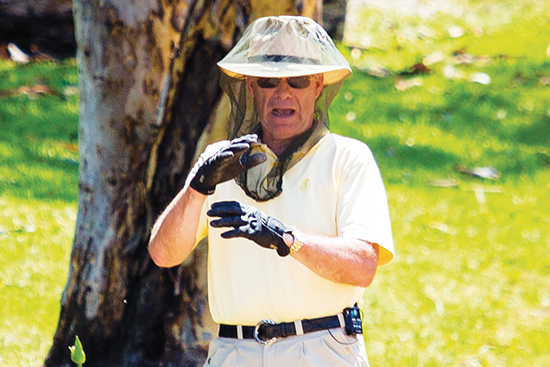 Rebecca Ashton sits in on a clinic with the Dutch showjumping trainer… She also took the photos
Rebecca Ashton sits in on a clinic with the Dutch showjumping trainer… She also took the photos
Albert Voorn was back teaching in Australia and not even the hottest November day on record was going to keep his students away from his clinic at Krissy and Heath Harris’ property at Mt White.
The Dutch Olympic medalist garners an enormous amount of respect from his riders because he gives them an enormous amount of respect back. Whether he is teaching national representatives or weekend amateurs, everyone gets an equal amount of attention and explanation, and everyone leaves the arena smiling. The message is always the same; keep it simple, respect the horse and leave him to get on with his job. This is what some of the riders had to say…
Rory Hovell
Rory is from Margaret River, WA but has been based at George Sanna’s place with 13 horses, competing on the east coast, while keeping an eye on ten pregnant mares at home back west.
“I brought three horses to the clinic, two stallions, Fair Diamond and Cassini Rosso, and this one, Finnigan who is by Carpino out of Bollinger (Cassini II). He’s rising six and has been jumping up to 1.15m. Albert’s approach is very, very correct, very classical, but it’s a different way of doing it. He allows the horse to go and do his job. Where I wanted to do so much more before, he wanted me to do a lot less.”
“Usually you have everything you need at the walk, and then from there you go into trot. But here Albert had us just start in trot. The horses actually loosen up, they free up and then you canter. He just wants them to start forward, free, relaxed and hold themselves.”
“We entered the arena, trotted, cantered and then rode with reins in one hand which actually gets you thinking about your own position. Then we used smaller circles to slowly bring the horse together. All of a sudden your horse is carrying himself in front of the leg, into the bridle, holding itself relaxed and you haven’t had a single fight. Then you start jumping. It’s common sense, but you always feel like you need to work harder where really you don’t.”
“Your leg is nicely relaxed around them, but it isn’t on them. As you collect more, if you need more leg, it supports them but you don’t end up with more in your hand. The biggest thing for me was the outside rein. You need to get the horse to look where it’s going and look at the jump. You need to use your inside rein to say, ‘You’re going there,’ so they’re looking where they’re going and they’re cantering on their own, then they actually take themselves to the jump. This is opposite to thinking outside rein, control the outside shoulder and turn them from the outside. You have the outside contact, but it’s allowing – not a backwards feel. You still have both sides of their mouth. We think about that with young horses, but not as they get older.”
more follows
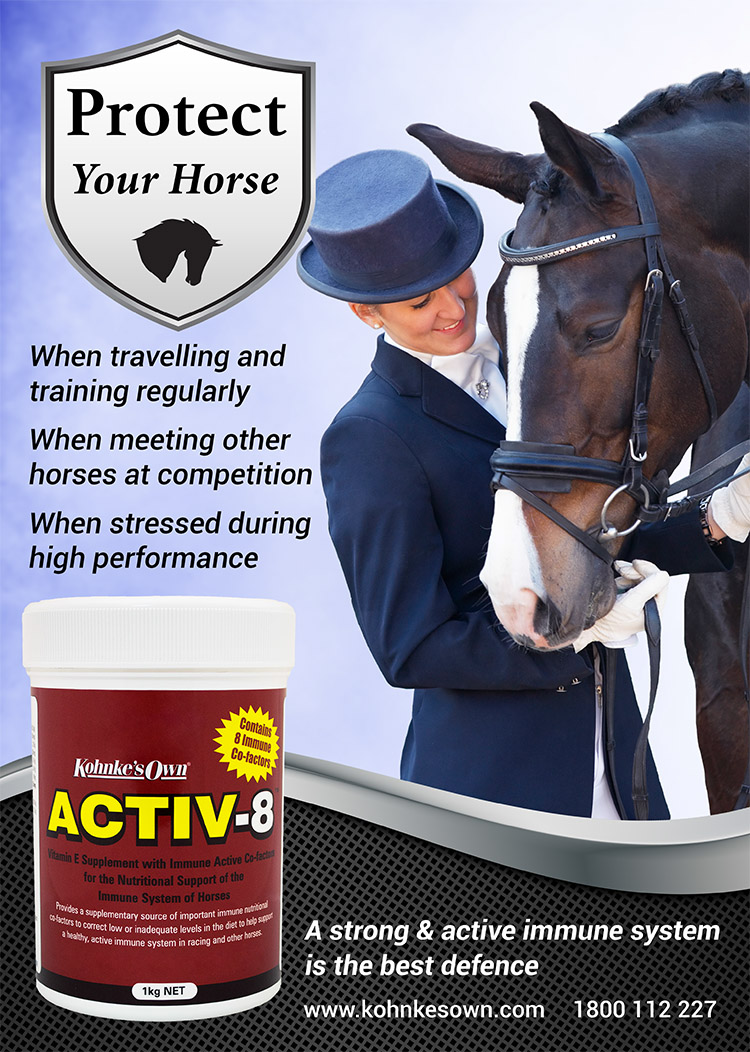
Albert made a comment that your position was so much better. What changed over the course of the clinic?
“I’m quite tall so I tend to collapse in the chest a bit. But now my abdominals are killing me! My stomach’s burning and my shins are burning. Having said that, he’s not into a really, really deep heel because it stiffens the leg. It’s more about releasing the top of your leg and letting the bottom part relax against the horse with all the weight in the stirrups. His way of getting me to sit up straighter was to hollow out my lower back and it really made a difference. It’s just a different way of saying things, but it worked for me. As he says, the closer you are to the vertical, the more effective everything is. He doesn’t like too much rider movement. The horse has to jump into you instead of you jumping a little in front of the horse.”
“For Albert, it’s all about having the horse go in its most natural state. He told me the story how he had a stallion who was incredibly good on the flat, but he would always have one rail down behind. So, he free jumped it one day and saw how it went naturally. It wasn’t so round, it poked its nose and was a little bit flatter, but it jumped 100% better and used its hind end better. After that, he let it jump more naturally and it was unbelievable behind. It had been ridden almost too well on the flat, too controlled. He also said, in riding that way, his vet bills have gone down 80%.”
“With one of the other stallions, I wanted to work on certain things but Albert said, ‘He’s built the way he’s built, so let him go the way he goes.’ His hind legs get a little bit behind him, but that’s where they are. When I left him alone he jumped even better. The better the canter, the better the jump.”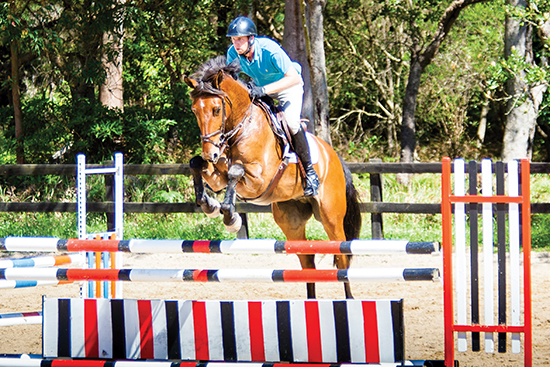
“You need to get the horse to look where it’s going and look at the jump. You need to use your inside rein to say, ‘You’re going there,’ so they’re looking where they’re going and they’re cantering on their own, then they actually take themselves to the jump. This is opposite to thinking outside rein, control the outside shoulder and turn them from the outside…”
“It’s not hocus pocus. It makes perfect sense and you need to ask yourself, ‘Do I really need to be asking for more?’ The young ones will slowly get stronger and they’ll be able to hold themselves more, and then you can go onto smaller circles and turns with more pace. He said once they feel good, step it up. When you step it up, they’ll lose their balance but then you rebalance them, get them stronger and then step it up again. I think that’s how you chip away to make them better, rather than saying, ‘I want you here now’. They will get there. We rode for an hour and we never once had a fight or an argument, or you never felt you were rubbing a hole in their side getting them forward. It’s all relaxed and soft.”
“Yesterday we did lots of transitions. We opened up the canter, we rode small circles and began collection and extension exercises, but without doing anything else. We cantered, trotted, cantered, trotted, walked, trotted, lots of transitions, but that way the canter got better and better. The horse was relaxed, holding itself and balanced.”
“We did a serpentine exercise where we jumped a fence, turned onto a circle, walked, picked up the canter, changed through the serpentine, jumped the next fence, walked, circled, cantered next the fence and so on, so it all built on itself. He uses the turn onto a jump to keep them where you want them, rather than going straight for long distances. The horses are always flexed to the inside, bent around the inside leg and looking where they’re going. They’re controlled by the line, not by your hand. You balance them back on the hindlegs, and then you get off them and leave them. If you can canter to a fence and have the distance, then you have it. You can’t find the distance if the canter is always changing rhythm and the horse isn’t in front of the leg. If the canter is always the same, anyone can find distance.”
“It’s always the same with these people who are good teachers. Albert himself says he doesn’t have a natural eye, but he has figured out a technique to find good distance by the way you come off a turn, by keeping the canter the same, by getting the horses looking at the jumps. No one missed when they did all that. I thought it was all really interesting. Keep It Simple, Stupid!”
“I remember watching Albert warm up at the Sydney Olympics, there was the Dutch dressage team there and Jeroem Dubbeldam and his horses are so beautiful on the flat, and then there was this one guy on a little bay stallion, a plain snaffle bridle with no noseband and a navajo saddle blanket and a normal hat, chaps and jeans and I was wondering who on earth it was. That was Albert Voorn and he won the silver medal. He does things his way. He’s worked out what works and doesn’t have to conform to anyone. He’s always been that sort of person.”
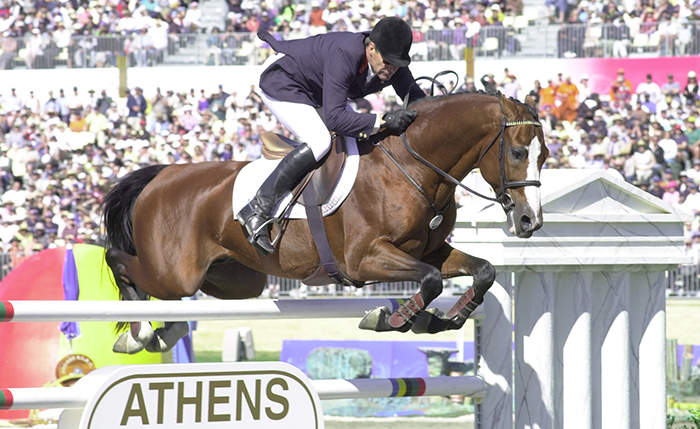
Albert and Lando, Silver at Sydney
another rider comes next
AMANDA MADIGAN
Amanda rode Helen Chugg’s imported stallion Baluga who has just started jumping 1.40m.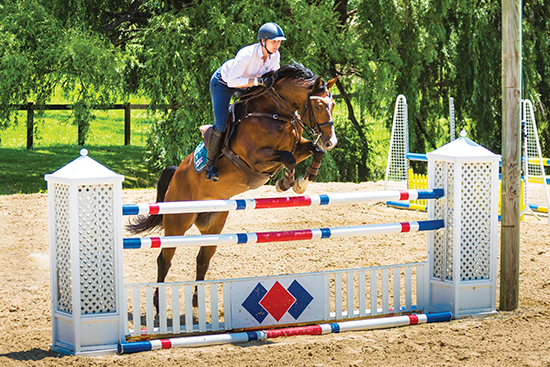
“When things start going wrong and the horses aren’t leaving all the fences up, like they’re supposed to, you start trying to compromise and change things rather than making it simple and stepping out of the way a bit. As riders, we tend to try to get in there and help the horse out too much. At the end of the day, it’s the horse’s job to canter and jump the fence. It was nice to have the reminders and the little tweaks here and there.”
“I found Albert’s message was very simple. When you’re riding a horse, they should be able to stop when you want them to stop, go when you want them to go and turn when you want to turn. We start to make it too complicated. He was more on making sure the rider was balanced and in their own self carriage, so that the horse could be in his.”
next Helen Chugg talks about Albert
HELEN CHUGG
“We used to bring horses to Albert when he was the National Coach prior to 2000. He was very, very good with the hot Thoroughbreds back then. I think probably in his teaching, he’s a little bit more classical now. It’s very simple, very easy, very correct and he’s very Dutch! No clashing aids, kick the horse to go, and pull the rein with no leg to slow down. The lack of clashing aids was very important for the Thoroughbreds. It’s interesting now with these sorts of Warmbloods, that it applies to them too, where 20 years ago most Warmbloods would have been a bit too Germanic. It’s that simple, and it should be that simple, and I think the horses appreciate it. Keeping the inside flexion, but keeping the weight in both reins equal is a very important message. A lot of people just pull the inside or the outside too much.
“It was a reminder of just how simple it can be, and like Amanda said, if the horse starts to get a bit excited or strong in the ring you then try to make it more complicated and introduce other things, when really we should be keeping it simple. Instead of supporting the horse all the time with the leg like a lot of showjumpers do, for me he had more of a dressage message that the leg says go, then the leg is light and the horse can breathe. It was a very valuable three days for us and I’m very happy we came.
“Baluga is a very quiet horse. We call him ‘Bob the Slob’ at home. It’s important that he learns to have his own energy, and his own adrenaline, and not be frightened or worried by that. Horses like that have to learn to enjoy their adrenaline and lightness.”
HEATH AHMAT
The sixteen-year-old from Western Australia got to experience a new horse under Albert’s watchful eye.
“The main message for me was to be soft with your horse and be relaxed, even if you’re telling your horse off. If you get tense then the horse gets tense, then you can’t do anything. It’s been a great few days.”
“We’ve just bought it, so this was the first time I’ve ever sat on it! It was really good to do that with Albert. It helped a lot and helped build my confidence. He was very understandable with what he wanted you to do. He was clear; you did it and it worked. He didn’t just ramble on.”
KRISSY HARRIS
Clinic Organiser, Krissy Harris rode nine-year-old Rosthwaite Sausalito when I watched her jump.
“The horse really suits me because I learnt on Thoroughbreds and I’m little, and I like them light. He’s jumping 1.20 and I had a lovely lesson today.
“Albert does change the emphasis of what he teaches every time he comes. It’s always the same principles though, but this time the emphasis was if you’re sitting in the saddle, you sit there and you do nothing. The leg and your whip send your horse forward, not your seat. For a jumping horse, no seat. The minute you use your seat you tighten the top of your leg and that pushes you out of the saddle, so then you try and jam your bum back in the saddle so you have all this activity and tenseness on top, which makes the horse hollow out and run away. So he wants you to sit there, that’s it.”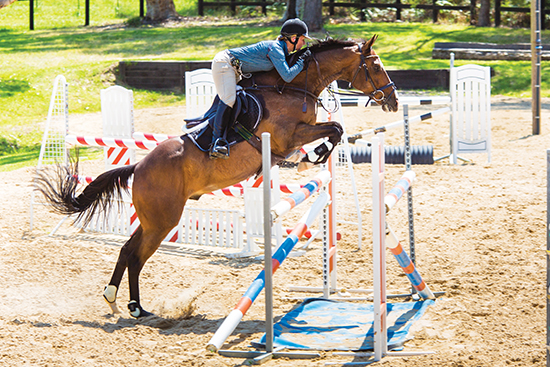
“There are a lot of relaxed and happy riders here. When riders get frustrated with themselves they often then get frustrated with their horse, but Albert is good at keeping everyone calm and in a positive mindset.”
“After last time, I think our direction is pretty good. The previous clinic we were flat out trying to make the corners and circles, but that’s ok now as we put the practice in. You have to remember that your money isn’t spent for the three days Albert is here, it’s also for the three months afterwards where you have to keep the same thought process happening.”
“I do really love the way he teaches with three in a lesson for an hour, because that’s what you’d do at home, rather than six or seven in a lesson that goes for two hours. I like that he does something you can replicate at home. He treats the amateur hobby riders with the same interest and energy as the professionals.”
What have you been up to since I saw you earlier this year?
“I’ve been teaching lots of clinics, but we also sold the farm. We sold it with a big loss of €600,000. It left us a little bit of money to buy a little house where my wife and I can probably spend the rest of our lives. We have the horse truck, I have a nice horse and we also have another horse that we have almost bought, we’re just waiting for the blood test. I think that horse could go all the way. It’s an eight-year-old chestnut mare by Staccato, bred by Paul Schockemöhle.”
So you’ve still got the competition bug then?
“That is why I have the two horses and perhaps a young horse from our own breeding, so yes, hopefully with them we can do a bit of showing. The young horse is now five and I have a young boy who has started him off for me, so I will start riding him in January. That is actually the plan that I can do a little bit of riding and a little bit of teaching. The very big financial pressure is gone and I can concentrate on my wife and myself.”
Nice to have that pressure lifted but it’s still a little sad I imagine?
“Yeah it doesn’t really get to me that much. I’m pretty stress free in that way. I don’t carry stress on a daily basis. I deal with pressure well.”
Have you trained yourself or does it come naturally?
“It’s trained. Naturally I’m a person who is pretty impatient, but it’s something you have to train if you want to improve on yourself. But you can only do it if you are aware of it. If you let it happen, then you are already too late. Things come up and you don’t react. I’m very happy with that because it means you don’t have stress taking a lot out of you. When things go bad I get very, very quiet. Like my farm, I can be sad about it or I can be happy with what is still left.”
How has this clinic been?
“I get to the riders easier than the first time. I see quicker improvement. They kept some of what they learnt the last time. I get the impression they like the teaching, which is nice.”
Any problems in general that need to be addressed?
“The thing is everybody does what they know. You never blame people for what they don’t know. They try hard, then you see improvement in everyone to different extents. Training like I do with the earphone and mike, it’s so quiet and there is no stress involved and that works very well. Then they can concentrate better. If things go wrong, it’s not a big deal. In every progress, mistakes are made.”
“World-wide the same problems are seen. Everybody hangs onto the outside rein, and it is the biggest enemy of the rider. They do it because they are taught to do it. For me it should be like riding the bicycle. That’s what they should do, both reins have the same importance. When riders get too hooked on the outside rein, they don’t give the horse the opportunity to turn. Nearly all the riders pull the horse’s head to the outside when they take a turn. For example, when you are on a course and you go very fast that is a little bit automatically what happens, because you don’t have time to correct the horse. In the training I like to pay more attention to it, or else they hold on, and they fall more and more on the front end. Always slow down to correct it, thinking of making the horse sit, because either he’ll drop down into his inside shoulder, or outside shoulder. Both are from a lack of balance, so you need to slow the horse down, not by pushing the outside leg to the inside shoulder or vice versa, because I want to collect him and get him to carry himself independently from me. The moment I push him, I keep carrying him. I want them light and I want them to carry me.”
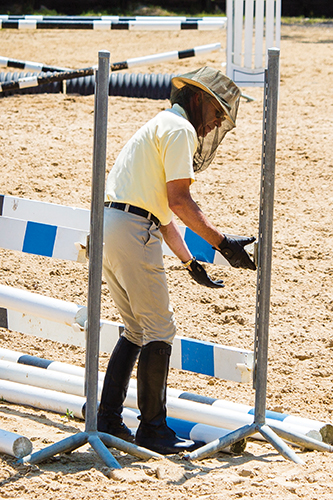 You do a lot of transitions and circles, but do you ever use grids or poles?
You do a lot of transitions and circles, but do you ever use grids or poles?
“Hardly, because the most difficult thing is for the rider is to ride a course, so I try to focus as much as possible on that. If you had very beginner riders that you had to work on their position you can do that. But nearly all the clinics are for riders who already ride courses and you want them to improve their riding of the course. When that’s good and they start to get bored, you might then say a bit of grid work. The thing with grid work, for a bad horse it doesn’t help, and for a good horse it’s not necessary.”
Why doesn’t it help a bad horse?
“A good horse is always a horse that has the mentality to jump clean, and is careful. They’re either careful or not, and careful horses leave the poles up and careless horses don’t. People think grid work and gymnastics make a horse jump better. That is not happening. What happens a lot is that we try to get a horse to do things it’s not comfortable with, and I don’t like to do that. At the end of the day, what we try to do is to make the ride to the fence as comfortable as possible for the horse, to get the horse to the spot from which it can jump the fence best. Because of that, the horse can perform to the best of his ability because he’s not hindered by the rider.”
Who out there competing at the moment is doing it the right way in your eyes?
“The combination that is very, very pleasant to watch at the moment Is Luciana Diniz and Fit For Fun.”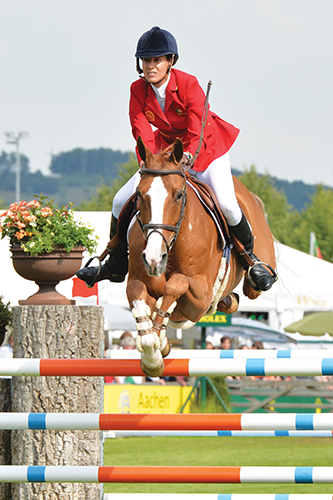
“That is what it’s all about. I like the type of horse; light, very careful, the rider giving the horse the ride it should have. It is smooth, elegant, not physical. That is what I like…”
I saw a YouTube video of you and Adelinde Cornelissen training together. What was that about?
“She was editor of the dressage magazine for a month and she wanted a dressage lesson from a showjumping rider.”
How was that?
“That was a big surprise to me because if you read the rules of the FEI and what the judges are looking for it’s lightness, smoothness and softness and there was none of this. I got it eventually. Because they use a lot of hand and leg together, you have to come to the point where you need to separate it. So first I made a couple of halts form the canter from just my hand and the same with the leg so he went from the spur. That was the first goal.”
“She is used to using a lot of pressure because she is taught like that, but you can come to the point where you can make the horse perform with half the strength of the rider. Then I think your score goes up.”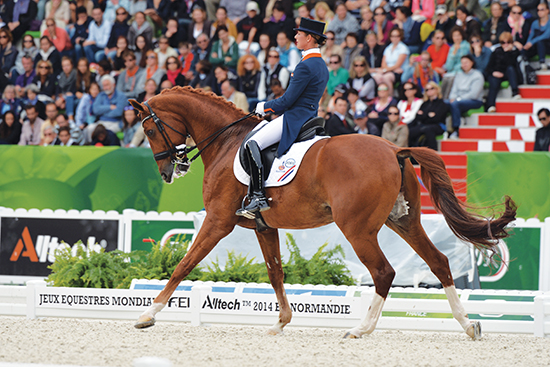
“I was pretty much surprised by the fact that a horse ridden up to Grand Prix level and winning at that level many medals and many titles was lacking so much lightness in the way they go. I couldn’t get Parzival to go to the canter without the pressure that he’s used to having…”
“You have slow motion horses, and active horses, they are all different. When they are more lazy, riders tend to use more physical strength to keep the horse going, where I put a sharper spur on and they go. I don’t want to use any more physical strength. It is the same if the horse pulls. I put a bit in that he respects so much that he doesn’t pull. Then they improve and you can go down with the bit or the spur.”
“There are fashions in riding, and then there are less and less of those from the old school who can correct it. And it’s a little bit a mentality change too. Everybody today is in a hurry. People do not allow horses to develop anymore. Even the top riders, they are in the rankings and suddenly they lose a horse, and you see young horses going into the big classes where they shouldn’t be, and then they wear them out because a horse physically and mentally cannot do it for a very long time consistently. When they are 10 years old, then their career starts if you want a career until 18 years with a sound horse. I spoke to someone that I help a little bit. Their horse won everything and the horse is now eleven and they say the horse is old. It is old in its mind and physically because he’s done more than he should. It’s a shame because it’s not necessary. Eight years is a long time for a career but you need to go very slowly.”
“I have for myself a rule. The horses jump certain heights at certain ages, even if it’s easy for them, I don’t go above it. A six-year-old jumps maximum 1.30m, seven-year-old 1.35m, an eight-year-old 1.40m, a nine-year-old 1.45 m and then when they are ten they are ready.”
But to be sarcastic, as a horse dealer you can’t sell as many horses that way!
“Yes you can, because it’s always patience that brings you more money. The problem is if you cannot financially have the patience necessary, then you shouldn’t do the job.”
But a lot of those young horses have a quick turnover.
“Let them do what they want to do if it makes them happy, but do we get quality riding? Do we have horses with very long careers that we can enjoy? No. Everything, it’s with economics, it’s with countries, all the decisions that we make are about getting richer. That is the wrong decision to make because it’s not about being. When we have a big business for example and we go to China for cheap production, and we let people starve so we can be rich ourselves, is that necessary? It is not my thing.”
Is showjumping in a good state?
“I think it’s in a very good state. There have never been more five star shows world wide as there are now and the prize money at these shows has never been higher. There were never more riding at a higher level than they are today, so it makes it a very big sport where you have very, very good performances in a lot of different shows. That is what the FEI doesn’t like. They want to have the top ten riders at a particular show rather than two of them here, two of them there, five of them somewhere else.”
So the Global Champions Tour is a good thing?
“It is the best thing that ever happened. And it forced the FEI to raise the prize money for Nations Cup. For that reason the FEI doesn’t like it.”
“I know there have to be rules, but they need to put themselves in our position, and help us as sportsmen. That is why I fall out with them all, because I cannot deal with them. I cannot. Nobody wants to say it because everyone is too afraid to say it. Now I’m in a situation where I don’t want to represent my country anymore in Nations Cups, because they have done me harm. Unless I am forced by an owner and in their interest I will, but for myself, I make my own decisions.”
“The thing that is wrong in the whole system is the rankings. The ranking should always be horse/ rider, never rider. Then you give opportunity to people to be up there. You have this club of riders and they are protecting this for themselves.”
“We all forget in this sport that it is the horse that wins the class, not the rider. It’s the horse ridden by such and such. Without the horse we are nothing. The horse comes first then the rider.”
“Also, the moment I am in a team, there are rules for the team and then I have to fit into that. The moment we have been chosen for the elite squad, we have to sign a contract with the federation in which they tell me what I could, what I shouldn’t, what I must. But on the way up to there, no support, no nothing. I have a big problem with that. They can tell us what to do when they’ve paid all the bills on the way up.”
“I invited them home and we discussed it all, but they said this is how it is. Then I had my table full of all the riders and we were talking about this, and they said I was 100% right, and I asked what are we going to do about this, and nothing. So you are fighting a lost battle. For me mutual respect is the most important thing in life but they don’t respect you at all. They treat you like shit. I do not like that.”
What’s your coping mechanism with all these frustrations?
“Find other pleasures.”
Any final tips?
“Most and for all, enjoy what you do. It’s very important. Appreciate what your horse can give you. I definitely say that you do not need to be in love with horses, but it is very important that you give the horse the utmost respect that he deserves. That’s a different thing, because at the end of the day, we use the horse for our own ego, so which horse do we love the most? The one that wins. So respect is more important.”
Want to breed a horse like Diarado? There’s a great selection of top European stallions at International Horse Breeders: www.ihb.com.au
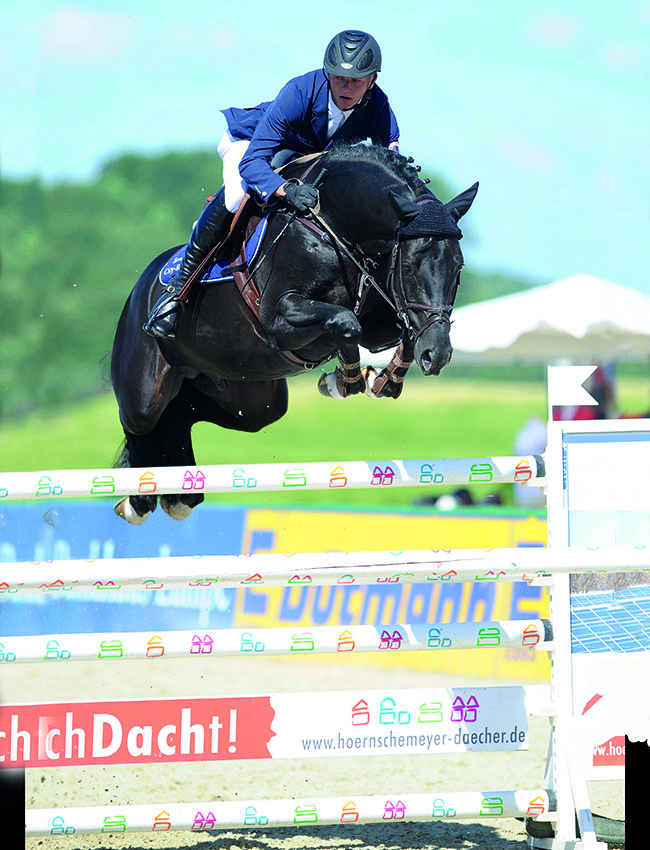
This article first appeared in the January 2016 issue of THM.
For more articles with Albert Voorn go to:



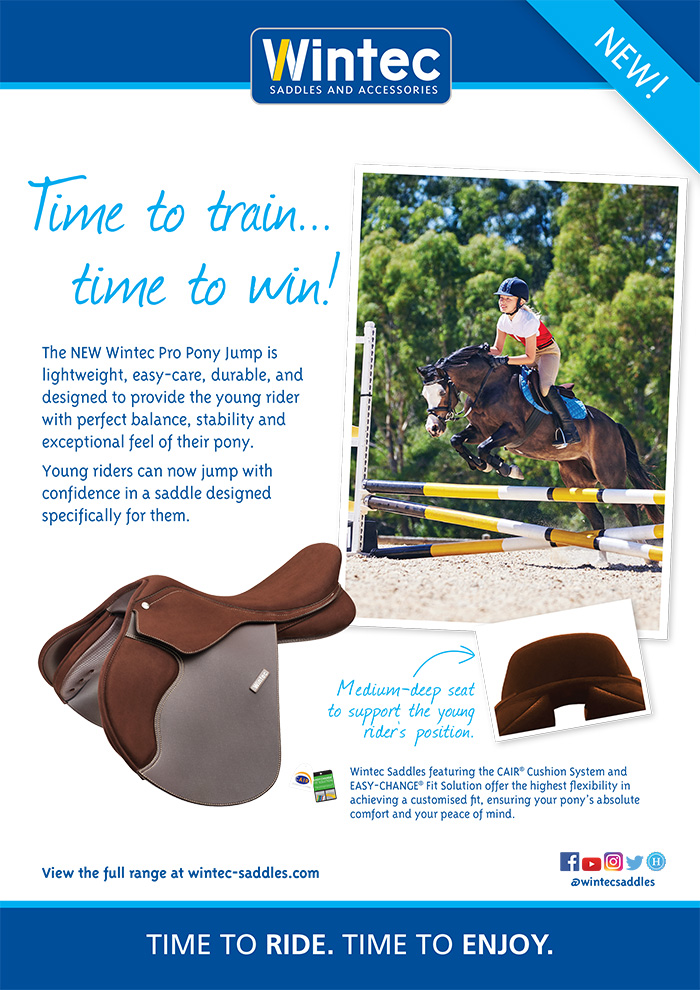
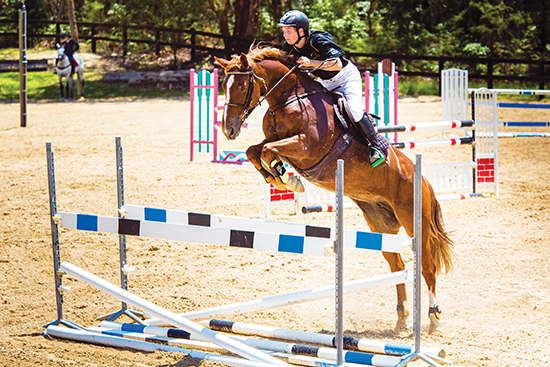
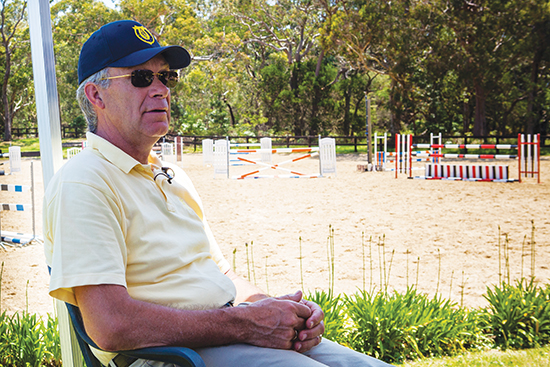
I have followed Albert and his methodology for over 10 years. I am a complete convert to his style of riding, it’s truly remarkable how it works with virtually all horses. Bravo Albert! I wish you continued success and happiness, thank you for inspiring me on every level. All the best Vera
I have ridden in clinics with Albert for 10+ years. He has always been a huge inspiration to me, as I feel a kinship to his way of thinking! Not in all my years competing and coaching have I come across someone with the same mind set in respecting these wonderful horses that do so much for us! We are what we’re sitting on and we must treat them with the utmost respect.
Albert’s methods are fantastic and I appreciate the simplicity. My own training and coaching of my students has blossomed since meeting Albert. I hear his voice in all different scenarios, whether I’m in the stadium ring myself or warming up a student.
Thanks Albert for coming into my life. We truly miss you here in Canada.